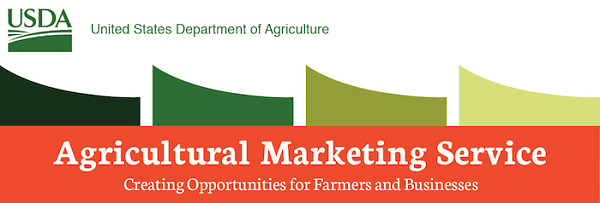FYI: It looks like the USDA Risk Management Agency plans to make changes to the apple crop insurance policy. Here’s information on a listening session to cover proposed changes before they go in effect next year.
From: Sereno, Alexander – FPAC-RMA, Raleigh, NC
Sent: Friday, May 29, 2020 9:35 AM
Subject: New England Apple Crop Insurance Listening Session
Good morning New England Apple Stakeholders,
I hope this email finds you well.
Attached is an invitation to an upcoming virtual listening session to discuss proposed changes to the apple crop insurance policy.
Please share this with anyone you know who might be interested.
Instructions for participation in the listening session are in the attached flyer.
Please contact Tracey Keene, RMA, with any questions regarding the content of this invitation. Telephone Number: 816-926-6339 OR email: tracey.keene. If you email, please include “Apple Listening Session” as your subject line.
Thank you,
Alexander Sereno
Director
Raleigh Regional Office
Risk Management Agency
United States Department of Agriculture
4405 Bland Road, Suite 160
Raleigh, NC 27609
919-875-4902
Stay Connected with USDA:
USDA is an equal opportunity provider, employer, and lender
USDA is an Equal Opportunity Provider, Employer, and Lender 1 .
LISTENING SESSION – NEW ENGLAND APPLE GROWERS PROPOSED CHANGES TO APPLE CROP INSURANCE PROGRAM THURSDAY, JUNE 25, 2020
You are invited to participate in a Listening Session with USDA’s Risk Management Agency (RMA) to discuss proposed changes to the Apple Policy.
WHY
In 2017 and 2018, RMA and its contractor, Agralytica, met with apple growers and other insurance stakeholders to discuss the apple program and identify potential changes to enhance coverage while also addressing increasing loss ratios and resultant premium costs. This listening session is a follow-up to those previous sessions. During this session, RMA will present proposed changes to growers and their insurance representatives and ask for their comments. The feedback received will be used to evaluate the effectiveness of the proposed changes.
The diagram below provides a timeline of RMA’s continued engagement with the apple industry as well as tentative timing for the revised policy’s release.
WHEN
Thursday, June 25, 2020 from 12:00 pm to 1:30 PM EST
HOW
The listening sessions will be conducted by phone OR by calling in by phone and connecting through the internet. You can participate by calling into the number provided to listen or speak OR you may call in and participate online which also allows you to view the presentation. The information to participate is provided in the instructions that follow on page 2.
2 .
INSTRUCTIONS TO PARTICIPATE
1. Participate by telephone:
Dial 1-888-844-9904. When prompted, please enter the access code: 4965127; OR
2. Participate by telephone AND follow along online to see our presentation. Join on the internet by using the instructions that follow for adobe connect and listen in by dialing 1-888-844-9904 and enter the access code 4965127 when prompted.
INSTRUCTIONS TO ALSO PARTICIPATE ONLINE
Webinar link: https://usda.adobeconnect.com/applegrowers/
Instructions: Use the webinar URL provided to “Enter as a Guest.” In the Name field, enter your first and last names. If you are representing an organization, please list it after your name. (Example: John Smith, Risk Management Agency).
If this is your first-time using Adobe Connect, we recommend testing your connection ten minutes ahead of time.
If you are having difficulty logging in, consider trying the link/URL with a different browser (Internet Explorer, Edge, Firefox, Google Chrome).
CONTACT INFORMATION
Please contact Tracey Keene, RMA, with any questions regarding the content of this invitation. Telephone Number: 816-926-6339 OR email: tracey.keene@usda.gov. If you email, please include “Apple Listening Session” as your subject line.
This electronic message contains information generated by the USDA solely for the intended recipients. Any unauthorized interception of this message or the use or disclosure of the information it contains may violate the law and subject the violator to civil or criminal penalties. If you believe you have received this message in error, please notify the sender and delete the email immediately.



